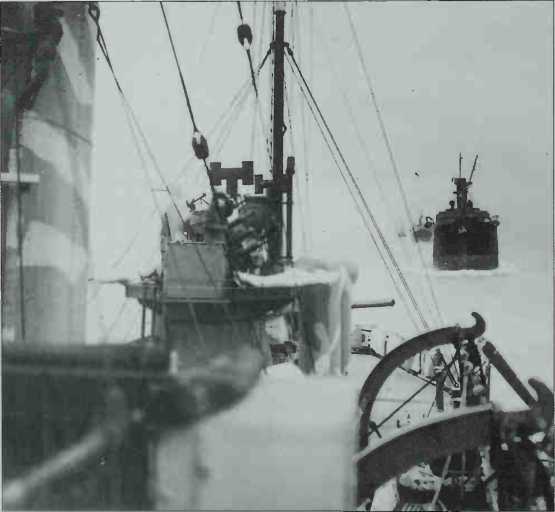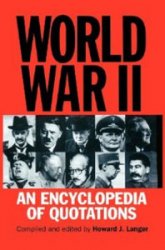Escort was employed once again, as it had been with marked success in World War I. There were some drawbacks, however, which made shortages more acute on the homefront. For example, it took valuable time for a convoy to be assembled and some ships were compelled to travel by a longer route than they otherwise would have done. Speedier ships were impeded by the pace of slower vessels. Also, dockyards became hopelessly congested when a glut of ships arrived all at once.
Nevertheless, the accompanying Royal Navy ships at least offered some protection to the merchant fleet. At first, however, the short range of the accompanying ships meant that escorts could only be offered for some 200 miles out of Britain. The convoy was then on its own until it met with a reciprocal Canadian escort a few hundred miles from the other side. It offered a midAtlantic gap which was ideal for hunter U-boats.
Even the proximity of the armed destroyers at the outset and close of the voyages proved little deterrent to the U-boats in the opening years of World War 11.
The major threat in the Atlantic was always from U-boats and sometimes from merchant ships fitted out with weaponry, known as armed

Left: Crewmen on board an escort warship observe the progress of a southbound convoy.
Raiders. Hitler was unwilling to risk his capital ships in the open sea after the Bismarck disaster. Lacking any aircraft carriers, the Germans were unable to launch air bombardments out of range of their airfields.
If they operated at night, the U-boats often went unnoticed by the escort ships even on the surface. Low
By the close of 1940, more than 4,700,000 tons of British shipping had been lost
In the water and much smaller than a surface ship, the most vigilant watch could be forgiven for letting the streamline craft slip by.
The only technology available to counter the threat from U-boats was Asdic, a sonar device which sent out underwater impulses that could, by the sound of the echoes, indicate the presence of solid objects. Not only was it almost useless used at speed or against surface objects, but early models were also unable to produce an accurate range and operators were woefully inexperienced.
In a bid to flush out U-boats during the early months of the war. Royal Navy warships attempted sweeps of convoy routes. The U-boats would simply dive and wait for the danger to pass. Even if their presence was detected, there was every chance the depth charge dropped by a pursuing vessel would fall short of its intended mark.
As the war progressed, Germany eased the way for its U-boat captains in their task of sinking trans-Atlantic shipping by providing new ports from which they could operate. The fall of Norway and France offered plenty of fresh and friendly harbours for repairs and restocking. In port, the U-boats were housed in specially built bunkers with two metre thick walls. That meant that although the docks came under heavy fire during Allied bombing raids the U-boats remained safe. It wasn’t until 1944 that the Allies found sufficient fire power to shatter these solid defences.
By the close of 1940, more than
4,700,000 tons of British shipping had been lost in the form of 1,281 vessels, about one fifth of the pre-war merchant fleet.




 World History
World History









